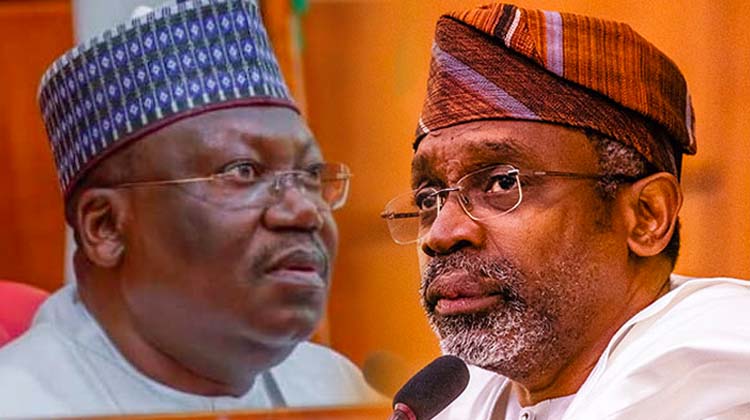See how much each lawmaker will get as severance packages
The National Assembly’s proposed N30.17bn severance package exceeds the Revenue Mobilisation and Fiscal Allocation Commission’s provision by about N27.36bn, Sunday PUNCH has learnt.
Earlier, it was reported that the Senate President, Ahmad Lawan; the Speaker of the House of Representatives, Femi Gbajabiamila and other lawmakers in both chambers of the National Assembly would get N30.17bn as a severance package.
A severance package or gratuity is the money paid to lawmakers after their four-year tenure in office.
The provision was contained in the 2023 Appropriation Bill the National Assembly passed and signed by the President, Major General Muhammadu Buhari (retd).
However, Sunday PUNCH checks indicate that the National Assembly members were allocated about N2.81bn, with senators getting N664.94m while House of Representatives members would be paid N2.15bn.
The president of the Senate would receive N7.45m, the deputy senate president, N6.93m and the other 107 senators would get N6.08m each.
The Speaker of the House of Representatives is expected to receive N7.43m, the deputy speaker N6.86m and the 358 members N5.96m each.
The severance package of the lawmakers was collated from a document obtained from the website of the RMAFC.
According to the RMAFAC, political office holders were entitled to 300 per cent of their annual salary as a severance package.
Going by RMAFC’s recommendation, the lawmakers were supposed to receive N2.81bn instead of the N30.17bn budgeted by the National Assembly.
However, The PUNCH observed that the severance allowance was separate from other financial packages, which may be in place as retirement benefits or pensions for some of the political office holders.
The ninth National Assembly’s severance package was N7bn higher than what was approved by the Senator Bukola Saraki-led eighth assembly.
At the twilight of the Saraki-led assembly, the sum of N23.68bn was approved as a severance package for lawmakers at the time.
However, Lawan and Gbajabiamila claimed the N30.17bn would also cover the inauguration of the 10th assembly.
The sum of N10 billion was earmarked for the construction of the National Assembly Service Commission building and N2.5bn was set aside for the completion of the National Institute for Legislative and Democratic Studies headquarters located along Airport Road in Abuja.
In the N967.48bn statutory transfers, the Senate got N33.27bn and the House of Representatives got N51.99bn.
In a statement in October, RMAFC said it would begin the process of reviewing the remuneration for political, public and judicial office holders in the country.
In a telephone conversation with our correspondent, the commission’s spokesperson, Nwachukwu Christian, said that the Commission would consult with stakeholders with a view to reviewing public office holders’ pay.
He said that the agency would engage critical stakeholders to determine if the remuneration for political, public and judicial officeholders should be increased or decreased.
In June last year, the former Chairman of RMAFC, Elias Mbam, said the commission had completed plans to begin the review of the revenue allocation formula.
The review was targeted at the equitable distribution of the accrued revenue into the Federation Account to the three tiers of government and it was to be concluded before the end of 2021.
However, the commission failed to meet its deadline in 2021 and ended up submitting its report of the review of the vertical revenue allocation formula to the President, Major General Muhammadu Buhari (retd.), in April last year.
In the report, the proposed vertical revenue allocation formula was 45.17 per cent for the Federal Government, 29.79 per cent for state governments and 21.04 per cent for the local governments.










Add Comment